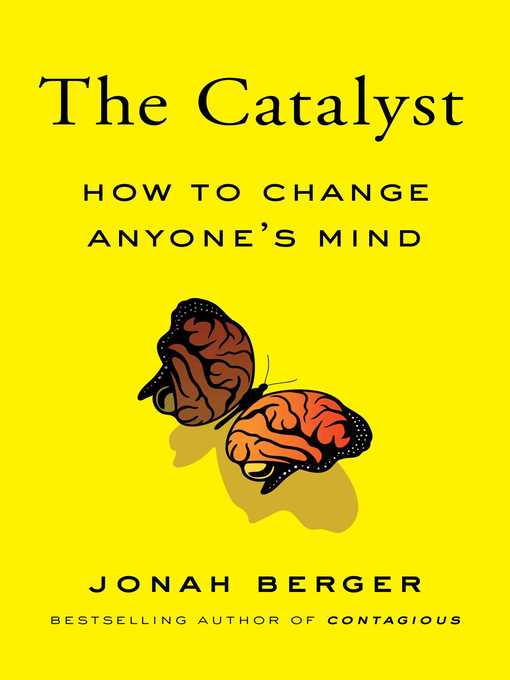
The Catalyst
How to Change Anyone's Mind
کتاب های مرتبط
- اطلاعات
- نقد و بررسی
- دیدگاه کاربران
نقد و بررسی

January 13, 2020
In this practical, convincing introduction to the art of persuasion, Berger (Contagious), marketing professor at the Wharton School at the University of Pennsylvania, argues that people try to change minds in the wrong way. To influence others, he suggests becoming a “catalyst,” one who persuades not by pushing an agenda and marshaling arguments but by identifying and removing the barriers to change. In each chapter, Berger discusses a major roadblock to change (such as uncertainty or attachment to the status quo) and provides examples and case studies of overcoming that roadblock. He chooses broad examples, such as public health campaigns and interpersonal interactions, with particularly illuminating sections on eliminating teen smoking and cultivating mentorship habits within sales teams. In an insightful chapter, Berger explains how formal interventions can provide addicts with persuasive evidence of their need to change. Then he digs deeper, explaining how interventions create a high concentration of evidence, which becomes increasingly convincing for most people. Some of the discussions are strictly business concerns, such as how to encourage purchases by giving consumers free product trials. This broadly appealing guide will convince general readers, but will be of particular interest to sales and marketing professionals.

January 15, 2020
The way to change someone's mind--about anything--is not to be more persuasive; instead, find out what is preventing change. Time and again, Berger (Marketing/Wharton, Univ. of Pennsylvania; Invisible Influence: The Hidden Forces That Shape Behavior, 2016, etc.) has discovered in his research that "pushing harder" does not sell a car, change someone's vote, or get a child to eat spinach. It is not more information, facts, or reasons that are needed. You change minds, he writes, by "removing roadblocks and lowering the barriers that keep people from taking action." Indeed, "the more we hear about what is preventing someone from changing, the easier it is to help." In each chapter, the author focuses on the key forces that encourage inertia: the tendency to push back when someone is trying to convince you, attachment to the status quo, reluctance to make big changes, uncertainty, and the need for more corroboration. Berger draws on research and case studies and offers intriguing anecdotes. He shows how a Florida anti-smoking effort built trust with teenagers, asking them what they wanted and encouraging their own decision-making rather than telling them what to do; and how a rabbi befriended a harassing Ku Klux Klan member and convinced him to abandon his extremist views. The author describes how people shed their "status quo bias" when they realize the cost of doing nothing and why identifying and exploiting a "movable middle" can win over swing voters. Uncertainty can be overcome by making new things easier to try by offering free samples. A reluctant boss's mind can be changed by enabling her to personally experience a novel approach to customer service. Detailed case studies include the story of how Americans abandoned their considerable reluctance to eat less desirable cuts of meat during World War II (with better cuts going to the military) when given recipes for using liver in meatloaf. A well-written guide that can be useful in both business and personal life.
COPYRIGHT(2020) Kirkus Reviews, ALL RIGHTS RESERVED.

March 6, 2020
Berger (Wharton Sch., Univ. of Pennsylvania) follows up his previous works, Invisible Influence and Contagious, with an overview of successful negotiation--it's not so much that one needs to become an expert but, as the author explains, utility comes into play more often than not. Berger speaks to the need for real conversation when conducting negotiations, but also summarizes the business practice using the acronym REDUCE (Reactance, Endurance, Distance, Uncertainty, and Corroborating Evidence), detailing these concepts in chapters devoted to each topic. In contrast to a winner-take-all strategy, as in Robert Ringer's Winning Through Intimidation, Berger takes more of a positive-sum approach. To this end, he provides a number of examples, including managers looking to enact organizational change and hostile negotiators in the line of duty. VERDICT While beneficial for all readers, this helpful guide would make a perfect gift for college students entering the job market.--Steven Silkunas, Fernandina Beach, FL
Copyright 2020 Library Journal, LLC Used with permission.

























دیدگاه کاربران